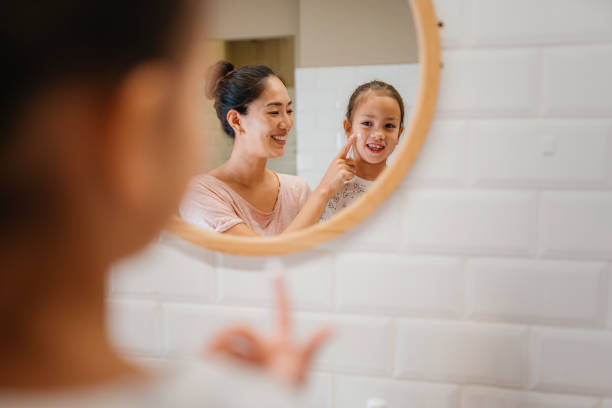When it comes to skincare, Japan and Korea have led the way with innovative ingredients, carefully structured routines, and time-tested traditions. But with so many similarities and unique strengths, how do you choose which routine fits your daily lifestyle best? In this comprehensive guide, we will explore the key differences between the Japanese and Korean skincare routines, the star ingredients of each, and which approach aligns better with your skin goals and schedule.

The Philosophy Behind the Routines
Japanese skincare is rooted in simplicity, minimalism, and preventive care. The goal is to maintain healthy skin for the long term. Hydration, sun protection, and gentle cleansing are key. The Japanese routine typically includes fewer steps and emphasizes quality ingredients in multifunctional products.
On the other hand, Korean skincare revolves around the idea of layered hydration and innovation. It focuses on treating specific skin concerns with a multi-step regimen, usually ranging from 7 to 10 steps. Each step targets a specific issue, offering a tailored solution through lightweight layers.
Step-by-Step Breakdown
Japanese Skin Care Routine
- Oil Cleanser: Gently removes makeup, sunscreen, and excess sebum.
- Foam Cleanser: A soft wash that clears impurities without stripping the skin.
- Softener/Lotion: Prepares the skin to absorb subsequent products.
- Essence or Serum: Targets specific concerns like dullness or aging.
- Moisturizer: Locks in hydration and keeps the skin supple.
- Sunscreen: Essential for daily protection against UV damage.
The Japanese skin care routine is ideal for those who want an efficient yet effective regimen with a focus on long-term results.
Korean Skin Care Routine
- Oil Cleanser: Melts away makeup and pollutants.
- Foam/Water Cleanser: Double cleansing is vital in Korean skincare.
- Exfoliator: Used 1-2 times a week to remove dead skin.
- Toner: Rebalances pH and begins hydration.
- Essence: The heart of Korean skincare; hydrates and treats.
- Serum/Ampoule: Delivers active ingredients deep into the skin.
- Sheet Mask: Optional, but great for hydration and relaxation.
- Eye Cream: Targets fine lines and puffiness.
- Moisturizer: Seals in all the previous layers.
- Sunscreen: Daily sun protection is a must.
This routine is perfect for those who enjoy pampering their skin and are willing to invest time in self-care.
Daily Skincare Guide: Japanese vs Korean Routine and Their Star Ingredients
Both Japanese and Korean skincare routines offer a variety of star ingredients that reflect their beauty philosophy. Understanding these key components can help you select the best products for your lifestyle and skin concerns.
Japanese Star Ingredients:
- Rice Bran (Komenuka): Rich in antioxidants, it softens and brightens the skin.
- Camellia Oil (Tsubaki Oil): A lightweight oil that deeply nourishes without clogging pores.
- Green Tea (Matcha): Packed with anti-inflammatory and anti-aging properties.
- Hyaluronic Acid: A staple in hydrating formulas, commonly found in the best Japanese beauty products.
- Collagen: Boosts skin elasticity and smooths fine lines.
These ingredients feature prominently in Japanese skin products from renowned Japanese skin care brands like Hada Labo, SK-II, and Shiseido. If you’re shopping in India, many Japanese skin care products in India are now accessible through local retailers and online platforms.
Korean Star Ingredients:
- Snail Mucin: Known for skin regeneration and deep hydration.
- Ginseng: Promotes collagen production and reduces fine lines.
- Niacinamide: Evens out skin tone and reduces hyperpigmentation.
- Centella Asiatica (Cica): Soothes irritation and strengthens the skin barrier.
- Fermented Extracts: Enhance product absorption and promote a healthy skin microbiome.
K-beauty brands like Laneige, COSRX, and Innisfree incorporate these ingredients to target diverse skin issues with great success.
Japanese vs Korean Beauty: What’s the Main Difference?

The most notable difference between Japanese vs Korean beauty lies in their approach:
- Japanese skincare = Minimalism + Prevention
- Korean skincare = Layering + Targeted Treatment
While Japanese skincare vs Korean skincare routines may appear similar on the surface, Japanese products usually have a focus on tradition and subtle, natural enhancement, whereas Korean products are innovation-driven and trend-focused.
If you prefer a quick, effective, and timeless approach to skincare, Japanese skincare may be more suited to your daily routine. If you enjoy experimenting with new products and enjoy spending time pampering your skin, Korean skincare will likely be a better match.
Choosing the Right Routine for Your Daily Lifestyle
Here’s how to decide between Japanese or Korean skincare routine depending on your schedule, skin concerns, and personal preferences:
1. Busy Mornings? Choose Japanese Skincare
If your mornings are rushed, the Japanese skin care routine offers fewer steps while delivering excellent results. Their best Japanese skin care products are known for multi-functionality—like cleansers that also hydrate or moisturizers with SPF.
2. Love a Nightly Ritual? Go Korean
The Korean skin care routine is perfect if you enjoy winding down with a detailed skincare regimen. Layering light textures and using sheet masks can be a calming, spa-like experience at home.
3. Sensitive or Problem Skin? Korean Skincare Has Options
Thanks to ingredients like Cica, snail mucin, and probiotics, Korean products are incredibly gentle and suitable for acne-prone or sensitive skin.
4. Prefer Tried-and-Tested Simplicity? Stick with Japan
With a focus on heritage, Japanese beauty products tend to be straightforward and trustworthy. They’ve stood the test of time and often cater to all skin types with fewer synthetic additives.







